While both Philodendron and Pothos are popular houseplants due to their easy care and attractive foliage, there present a few key differences
Pothos (Epipremnum aureum) and Philodendron are two of the most popular houseplants around the globe, cherished for their beautiful foliage and ease of care. While they share some similarities, there are distinct differences between them. Understanding these differences can help plant enthusiasts choose the right plant for their home environment and care preferences.
Pothos, scientifically known as Epipremnum, is a highly adaptable and popular houseplant native to the Solomon Islands. It exhibits a vining growth habit, making it perfect for hanging baskets or as a climbing plant with the support of a moss pole. The foliage of Pothos is its most striking feature, with glossy, heart-shaped leaves that can display a variety of colors and patterns, including green, yellow, white, and variegated forms. Widely used for its aesthetic appeal and air-purifying qualities, Pothos is favored for its low maintenance needs, thriving in a range of lighting conditions and requiring minimal care, making it an ideal plant for beginners and seasoned gardeners alike.
Philodendron is a diverse genus of plants native to the tropical Americas, known for its wide variety of shapes, sizes, and foliage colors. These plants exhibit both climbing and non-climbing (self-heading) growth habits, making them versatile for indoor gardening. Philodendron leaves can be large and imposing or small and delicate, often showcasing deep greens and sometimes featuring striking variegation or unique textures. They are celebrated for their ability to adapt to the low-light conditions typical of indoor environments and are used for their ornamental beauty and air-purifying properties. Philodendrons are favored for their ease of care, making them suitable for a range of indoor settings, from homes to offices.
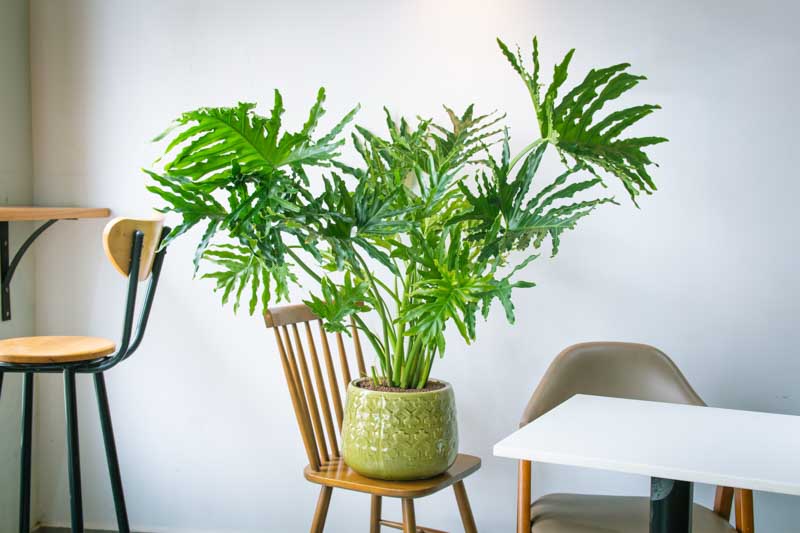
Philodendron bipinnatifidum (split-leaf philodendron, lacy tree philodendron, horsehead philodendron)
Both Pothos and Philodendron belong to the Araceae family, known for its flowering plants that produce a spadix surrounded by a spathe. However these plants do not belong to the same genus.
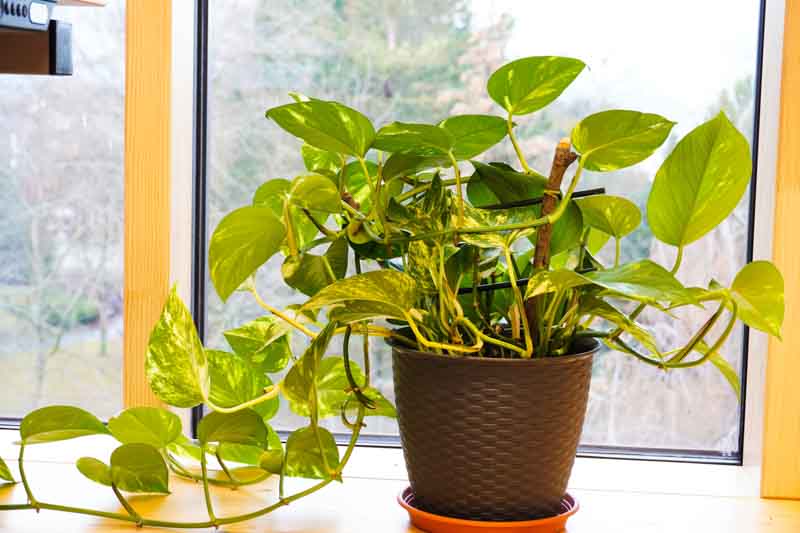
Epipremnum aureum (Golden pothos or Devil’s Ivy plant)
The growth habits and sizes of Pothos and Philodendron plants are key characteristics that can help distinguish between these two popular types of houseplants. While both genera include a variety of species with climbing or trailing habits, there are notable differences in their growth patterns and potential sizes.
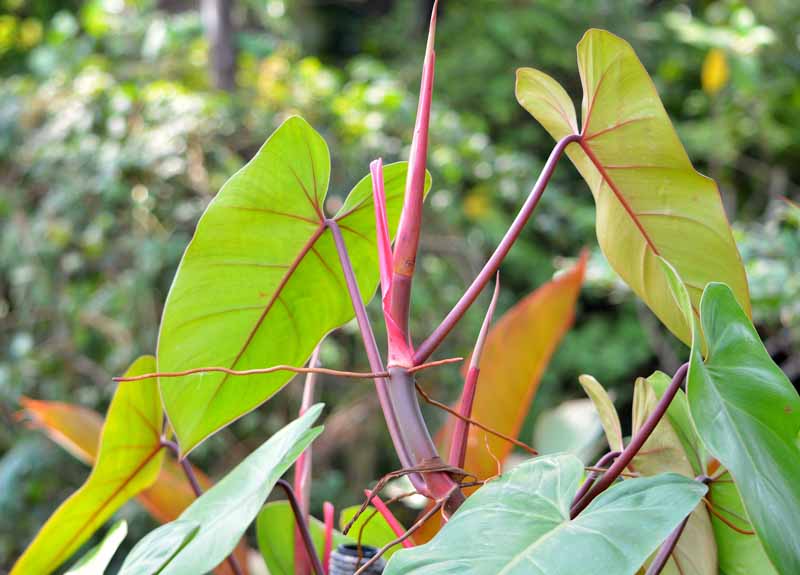
Philodendron erubescens (Blusing Philodendron)
The foliage of Pothos and Philodendron plants exhibits distinct differences that can help in identifying each:
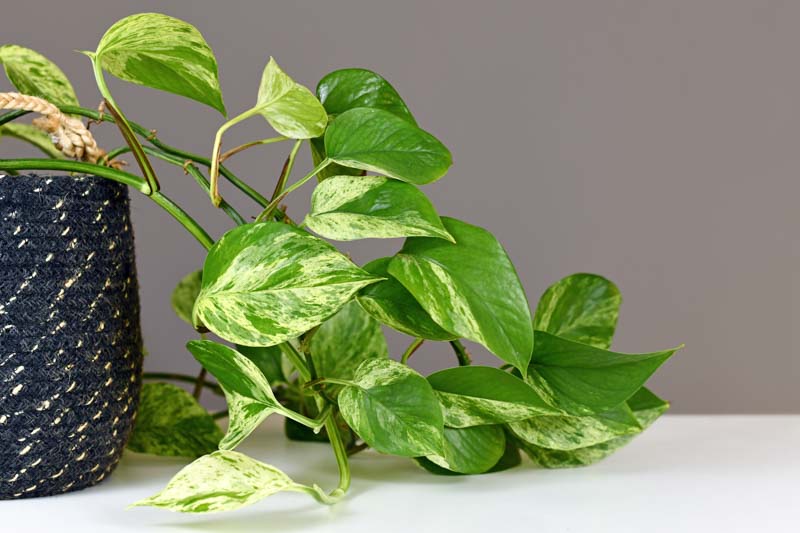
Epipremnum Aureum ‘Marble Queen’ (Golden Pothos)
The aerial roots of Pothos and Philodendron plants serve as one of the distinguishing features between these two popular houseplants.
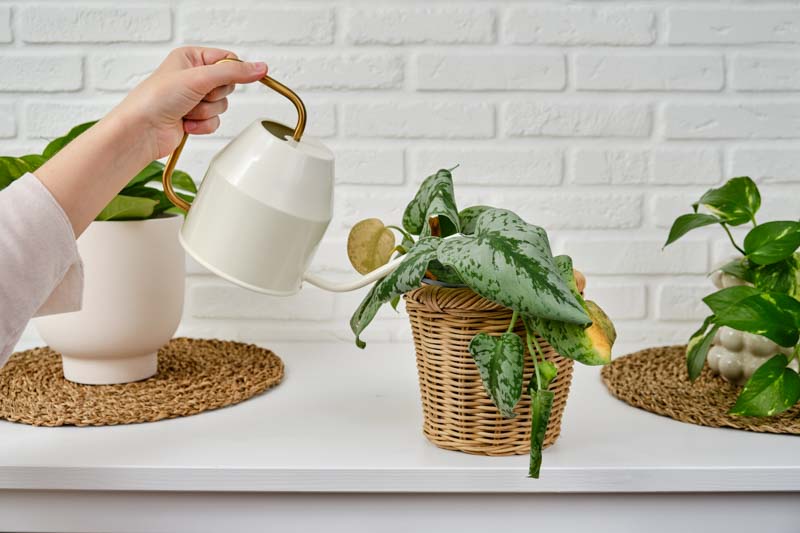
The care requirements for Pothos and Philodendron plants are quite similar due to their comparable tropical origins, which makes both genera well-suited for indoor environments. However, there are subtle differences in their care that can impact their health and growth. Understanding these nuances can help ensure that each plant thrives in its environment.
Despite these differences, both Pothos and Philodendron are considered low-maintenance, making them excellent choices for beginners and seasoned plant enthusiasts alike. Adjusting care slightly to match each plant’s preferences will ensure they remain vibrant and healthy.
Caution: Pothos and Philodendron plants are toxic to humans and pets if ingested, causing mouth and stomach irritation and potentially leading to vomiting.
| Hardiness |
10 - 12 |
|---|---|
| Plant Type | Houseplants, Climbers, Perennials, Shrubs |
| Plant Family | Araceae |
| Exposure | Partial Sun |
| Season of Interest |
Spring (Early, Mid, Late) Summer (Early, Mid, Late) Fall Winter |
| Maintenance | Low |
| Water Needs | Average |
| Soil Type | Loam, Sand |
| Soil pH | Acid, Neutral, Alkaline |
| Soil Drainage | Moist but Well-Drained |
| Characteristics | Showy, Evergreen |
| Tolerance | Deer, Rabbit |
| Landscaping Ideas | Hanging Baskets, Patio And Containers |
| Hardiness |
10 - 12 |
|---|---|
| Plant Type | Houseplants, Climbers, Perennials, Shrubs |
| Plant Family | Araceae |
| Exposure | Partial Sun |
| Season of Interest |
Spring (Early, Mid, Late) Summer (Early, Mid, Late) Fall Winter |
| Maintenance | Low |
| Water Needs | Average |
| Soil Type | Loam, Sand |
| Soil pH | Acid, Neutral, Alkaline |
| Soil Drainage | Moist but Well-Drained |
| Characteristics | Showy, Evergreen |
| Tolerance | Deer, Rabbit |
| Landscaping Ideas | Hanging Baskets, Patio And Containers |
Create a membership account to save your garden designs and to view them on any device.
Becoming a contributing member of Gardenia is easy and can be done in just a few minutes. If you provide us with your name, email address and the payment of a modest $25 annual membership fee, you will become a full member, enabling you to design and save up to 25 of your garden design ideas.
Join now and start creating your dream garden!
Create a membership account to save your garden designs and to view them on any device.
Becoming a contributing member of Gardenia is easy and can be done in just a few minutes. If you provide us with your name, email address and the payment of a modest $25 annual membership fee, you will become a full member, enabling you to design and save up to 25 of your garden design ideas.
Join now and start creating your dream garden!